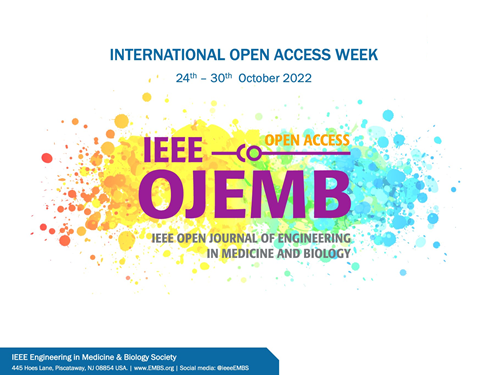Guided Conditional Diffusion Classifier (ConDiff) for Enhanced Prediction of Infection in Diabetic Foot Ulcers
IF 2.9
Q3 ENGINEERING, BIOMEDICAL
IEEE Open Journal of Engineering in Medicine and Biology
Pub Date : 2024-09-02
DOI:10.1109/OJEMB.2024.3453060
引用次数: 0
Abstract
用于增强糖尿病足溃疡感染预测的条件扩散分类器 (ConDiff)
目标:使用护理点 (POC) 拍摄的照片准确检测糖尿病足溃疡 (DFU) 感染。实现高性能对于预防并发症和截肢以及最大限度地减少不必要的急诊就诊和转诊至关重要。方法:本文提出了引导式条件扩散分类器(ConDiff)。这种新型深度学习框架将引导式图像合成与去噪扩散模型和基于距离的分类相结合。该过程包括:(1)通过向引导(输入)图像注入高斯噪声生成引导条件合成图像,然后通过反向扩散过程对噪声扰动图像进行去噪,以感染状态为条件;(2)根据合成图像与原始引导图像在嵌入空间中的最小欧氏距离对感染进行分类。结果显示ConDiff 表现出卓越的性能,平均准确率达到 81%,比最先进的(SOTA)模型至少高出 3%。它的灵敏度也达到了最高的 85.4%,这在临床领域至关重要,同时特异性也显著提高到 74.4%,超过了最佳的 SOTA 模型。结论ConDiff 不仅提高了 DFU 感染的诊断率,还开创了将生成性判别模型用于详细医学图像分析的先河,为改善患者预后提供了一种前景广阔的方法。
本文章由计算机程序翻译,如有差异,请以英文原文为准。
求助全文
约1分钟内获得全文
求助全文
来源期刊

IEEE Open Journal of Engineering in Medicine and Biology
ENGINEERING, BIOMEDICAL-
CiteScore
9.50
自引率
3.40%
发文量
20
审稿时长
10 weeks
期刊介绍:
The IEEE Open Journal of Engineering in Medicine and Biology (IEEE OJEMB) is dedicated to serving the community of innovators in medicine, technology, and the sciences, with the core goal of advancing the highest-quality interdisciplinary research between these disciplines. The journal firmly believes that the future of medicine depends on close collaboration between biology and technology, and that fostering interaction between these fields is an important way to advance key discoveries that can improve clinical care.IEEE OJEMB is a gold open access journal in which the authors retain the copyright to their papers and readers have free access to the full text and PDFs on the IEEE Xplore® Digital Library. However, authors are required to pay an article processing fee at the time their paper is accepted for publication, using to cover the cost of publication.
 求助内容:
求助内容: 应助结果提醒方式:
应助结果提醒方式:


